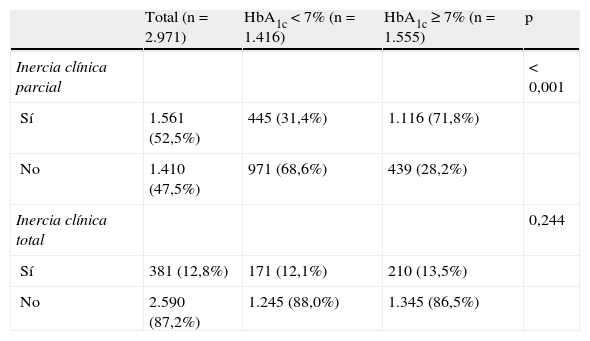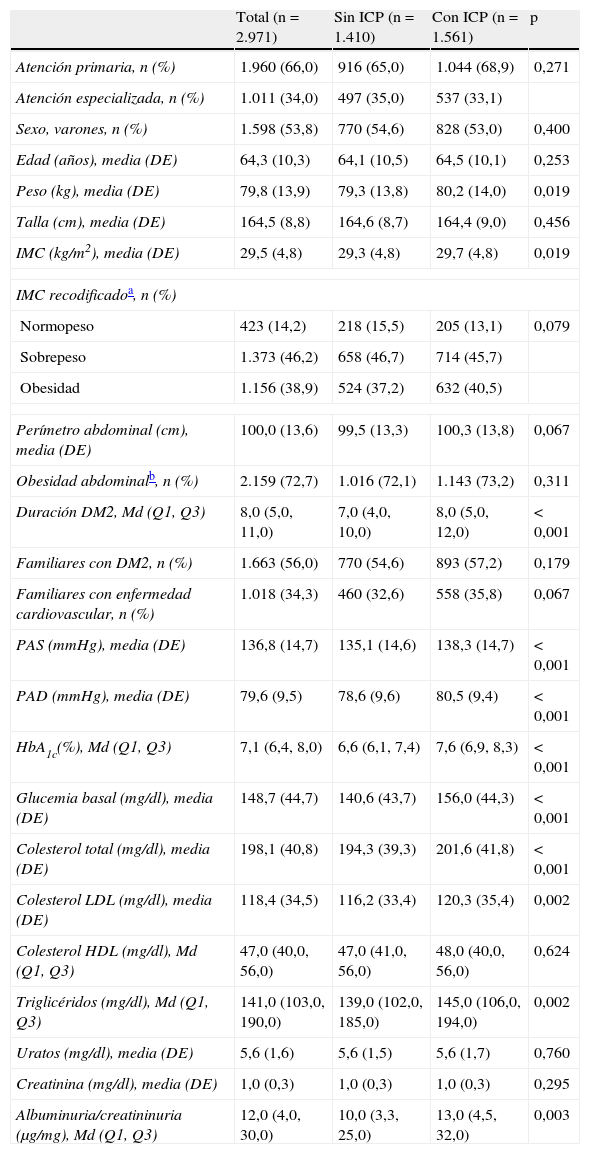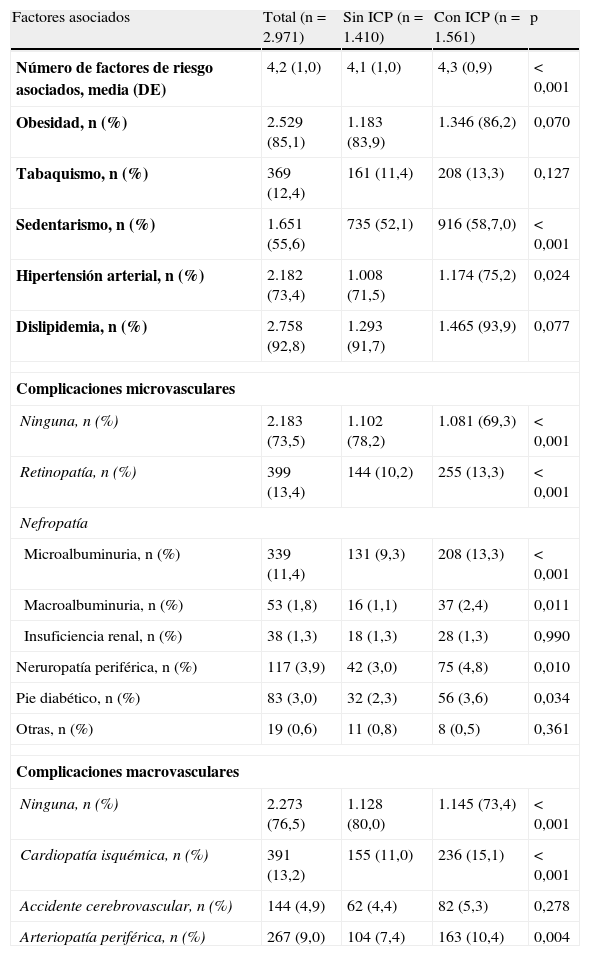Investigar la inercia clínica en el uso de los hipoglucemiantes orales (HO) en pacientes con diabetes mellitus tipo 2 (DM2) no insulinizados en España.
Pacientes y métodoEstudio transversal, retrospectivo (2 años), multicéntrico en toda España. La inercia clínica se definió como: número total de pacientes sin intensificación del tratamiento dividido por el número total de pacientes con valores de hemoglobina glucosilada (HbA1c) inadecuados(≥7%), multiplicado por 100. Si afectaba a todas las visitas con una HbA1c≥7% en los 2 años previos se definió como inercia clínica total (ICT), y si solo afectaba a alguna de ellas, como parcial (ICP). El cumplimiento del tratamiento con HO se evaluó con el test de Morisky-Green.
ResultadosSe incluyeron 2.971 pacientes, 1.416 bien controlados (HbA1c<7%) y 1.555 insuficientemente controlados (HbA1c≥7%). La ICP fue del 52,5% (intervalo de confianza del 95% [IC 95%] 52,4-52,6%), siendo menor en los pacientes con un control glucémico adecuado (31,4 frente a 71,8%; p<0,001). La ICT fue del 12,8% (IC 95% 12,2-13,8%). La ICP se asoció a sedentarismo, hipertensión y mayor número de complicaciones microvasculares y macrovasculares. El cumplimiento terapéutico fue del 38,0%, siendo menor en los pacientes con ICP en relación con los que no la presentaban. El sexo femenino (odds ratio [OR] 1,43, IC 95% 1,09-1,86%) y una menor duración de la DM2 (OR 0,98; IC 95% 0,95-0,99%) se asociaron de forma independiente a ICP.
ConclusionesAproximadamente la mitad de los pacientes con DM2 no insulinizados y en tratamiento con HO presenta ICP. Cuatro de cada 10 pacientes cumplen adecuadamente el tratamiento con HO. El sexo femenino y una menor duración de la DM2 se asocian independientemente a ICP.
To study clinical inertia in the management of oral hypoglycemic agents (OHA) in non-insulin treated patients with type 2 diabetes mellitus (T2DM) in Spain.
Patients and methodEpidemiological, cross-sectional, retrospective (2 years), multicenter study. Clinical inertia was measured as the total number of patients without OHA treatment intensification divided by the total number of patients with inadequate HbA1c values (≥7%), multiplied by 100. Total clinical inertia (TCI) was the absence of OHA treatment intensification in all visits with a HbA1c≥7% values in the previous 2 years; partial clinical inertia (PCI) occurred when this absence only occurred in some of these visits. We assessed OHA treatment compliance with the Morisky-Green test.
ResultsWe included 2,971 patients, 1,416 adequately controlled (HbA1c<7%) and 1,555 inadequately controlled (HbA1c≥7%). PCI prevalence was 52.5%(95% confidence interval [95% CI] 52.4-52.6%) while TCI prevalence was 12.8% (95% CI 12.2-13.8%). PCI was lower in patients adequately controlled as compared with those inadequately controlled (31.4% vs. 71.8%; P<.001). PCI was associated with sedentary lifestyle, hypertension and higher prevalence of micro and macrovascular complications. Only 38.0% of patients were compliant with the OHA treatment, being this percentage even lower in subjects with ICP. Two variables were independently associated with ICP: female sex (odds ratio [OR] 1.43; 95% CI 1.09-1.86%) and a shorter duration of DM2 (OR 0.98; 95% CI 0.95-0.99).
ConclusionsOne out of 2 patients with T2DM and treated with OHA without insulin suffer from PCI. Only 4 out of 10 patients are compliant with OHA treatment. Female sex and a shorter duration of T2DM are independently associated with PCI.
Artículo
Comprando el artículo el PDF del mismo podrá ser descargado
Precio 19,34 €
Comprar ahora












